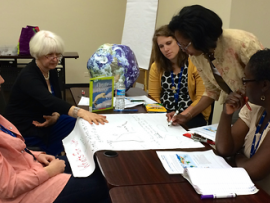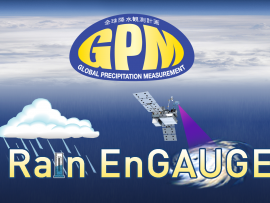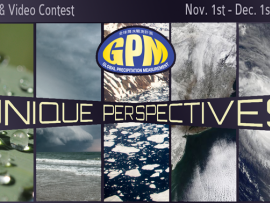Browse Front Page Features Resources
Browse Front Page Features Resources
Primary Topic:
Subtopics:
Type:
Keywords:
Summary:
A video describing how the GPM constellation turns observed radiances and reflectivities of global precipitation into data products.
Primary Topic:
Subtopics:
Type:
Keywords:
Summary:
This short video, derived from the Science on a Sphere film "Water Falls", explores how Earth's freshwater resources are allocated and used.
Primary Topic:
Type:
Summary:
GPM recently completed a competitive process to select 25 teachers from around the world for its Master Teacher Program. The chosen educators will develop educational resources based on GPM's data to share with their students and school communities.
Primary Topic:
Subtopics:
Type:
Standards:
Keywords:
Summary:
Step by step instructions and a parts list to build your own LEGO model of the GPM Core Observatory.
Primary Topic:
Subtopics:
Type:
Summary:
Overview of the engineering behind building and testing the GPM Core Observatory at NASA Goddard Space Flight Center.
Primary Topic:
Type:
Summary:
Celebrate the launch of the Global Precipitation Measurement (GPM) Mission by hosting a GPM Rain EnGAUGE Event – a family science night at your school, outdoor education center, library or museum.
Primary Topic:
Subtopics:
Type:
Standards:
Keywords:
Summary:
Contrary to popular belief, raindrops are not tear shaped and are actually shaped like the top of a hamburger bun, round on the top and flat on the bottom. This new video from GPM explains why.
Primary Topic:
Subtopics:
Type:
Summary:
Build a paper model of the GPM Core Observatory and learn about the technology the satellite will use to measure precipitation from space.
Primary Topic:
Type:
Summary:
NASA’s Global Precipitation Measurement mission wants to see your photos and videos of precipitation from unique perspectives! There are many ways to view precipitation.
Primary Topic:
Subtopics:
Type:
Keywords:
Summary:
These original GPM lessons have been developed to teach students about local and global water issues. . They are hands on activities that are done largely outdoors, and which include scientific data collection and analysis and integrate technology.











